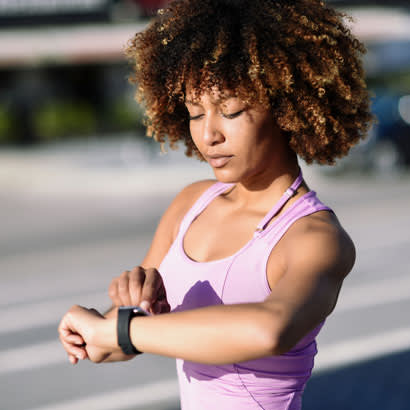
As park and recreation professionals, you know there’s nothing like returning from the holiday break to find community members who are excited and determined to ring in the new year with a healthy attitude and new fitness regimen. Of course, like many people with New Year’s resolutions, their enthusiasm remains high during the early stages of starting a fitness program and gradually wanes with each passing month.
So, how can park and recreation departments keep community members engaged and on the path to a healthier lifestyle? Perhaps by introducing new fitness programming for 2019! Recently, the American College of Sports Medicine (ACSM) conducted a research survey among thousands of fitness professionals, via a digital questionnaire, to gauge their predictions about potential health and fitness trends. These findings were published in ACSM’s Health & Fitness Journal (FIT).
Following are the Top 10 Fitness Trends for 2019 that you might want to consider incorporating into your own recreation programming.
1. Wearable Technology
With so many different brands and models on the market today, it’s no wonder that wearable tech — including fitness trackers, smart watches, heart rate monitors and GPS tracking devices — has remained on ACSM’s trends list since 2016. Recreation staffers could encourage those taking fitness classes to track their daily progress using these handy devices to keep them motivated and to ultimately help them achieve their fitness goal.
2. Group Training
What’s the difference between group training and group personal training? According to ACSM, more than five participants qualify as “group training.” While group exercise training programs aren’t a novel concept for recreation departments, you can bring a fresh look to the types of classes you currently offer. After all, encouraging people to bring a fitness buddy to class increases their likelihood of staying on the program. From cardio-based classes, to spin classes, to dance-oriented classes — the sky’s the limit.
3. High-Intensity Interval Training (HIIT)
Although dropping from the No. 1 spot from last’s year survey, HIIT still remains among the top three trends. ACSM describes a typical HIIT workout as “short bursts of high-intensity bouts of exercise followed by a short period of rest.” You can offer this programming as 30-minute classes or longer. ACSM, however, does acknowledge that some fitness professionals warn about “potentially increased injury rates using HIIT,” but also points out that “this form of exercise has been popular in gyms all over the world.”
4. Fitness Programs for Older Adults
According to the U.S. Census Bureau, baby boomers (ages 52 to 70) make up 74 million of the total U.S. population, just slightly below the number of millennials. Thus, park and rec agencies must ensure their programming caters to age groups across the board. That means designing fitness programs specifically for older adults who want to maintain a healthy and active lifestyle. In 2018, this fitness trend reached the No. 9 spot.
5. Bodyweight Training
Coming in fifth is bodyweight training, which requires little to no equipment. Instead, it relies on a person’s bodyweight as the training modality — e.g., pushups and planks. This is a cost-effective way to offer fitness to community members without having to purchase expensive gym equipment. Plus, it enables class attendees to easily apply the skills they’ve learned at home.
6. Employing Certified Fitness Professionals
Fitness experts who participated in the ACSM survey stressed the importance of employing certified health and fitness professionals via “educational programs and certified programs that are fully accredited for health/fitness professionals.”
7. Yoga
For centuries, yoga has transcended different cultures — from Northern India to North America — and gone through various incarnations in the modern era, such as Power Yoga and Yogilates. Consider this trend an oldie but goodie! Regardless, it’s a trend that continues to withstand the test of time.
8. Personal Training
Personal training, according to ACSM, “includes fitness testing and goal setting with the trainer working one-on-one with a client.” By doing this, the trainer can customize workouts based on a client’s expressed fitness needs and goals. What’s more, this could be a great alternative for people who don’t feel comfortable taking fitness classes in a large group setting.
9. Functional Fitness Training
Functional fitness training employs strength training and other movements or activities with the objective of improving balance, coordination, strength and endurance. As an example, side lunges help enhance hip mobility. This is an ideal program for active seniors, who want to maintain their fitness.
10. Exercise Is Medicine (EIM)
A global health initiative led by ACSM, EIM urges primary care physicians and other healthcare providers to encourage their patients to commit to a fitness routine and integrate physical activity analysis and recommendations with regular patient visits. Park and recreation departments teaming up with healthcare agencies to promote health and wellness is really a win-win scenario.
While we realize not all these trends are conducive to your agency’s current health and fitness programming, even adding one trend might be enough to inspire community members to think of fitness not just as a New Year’s resolution, but as a true lifelong commitment to health and happiness.
Vitisia Paynich is a Southern California-based Freelance Writer for Parks & Recreation magazine.

